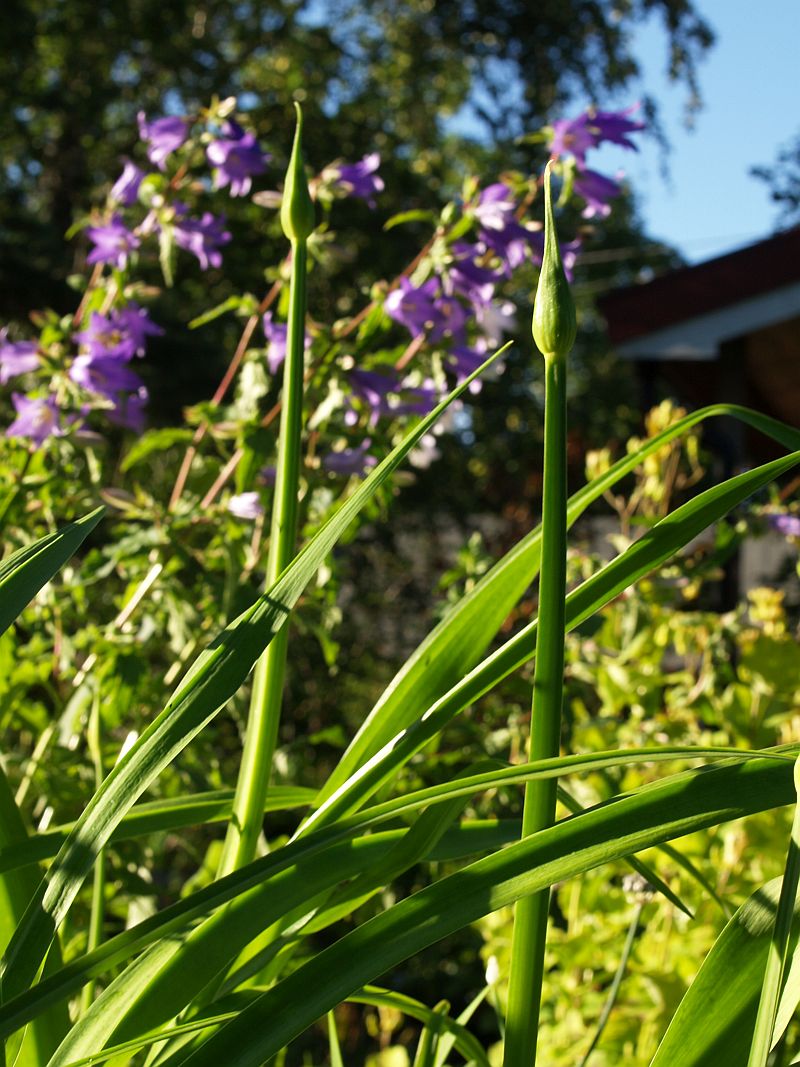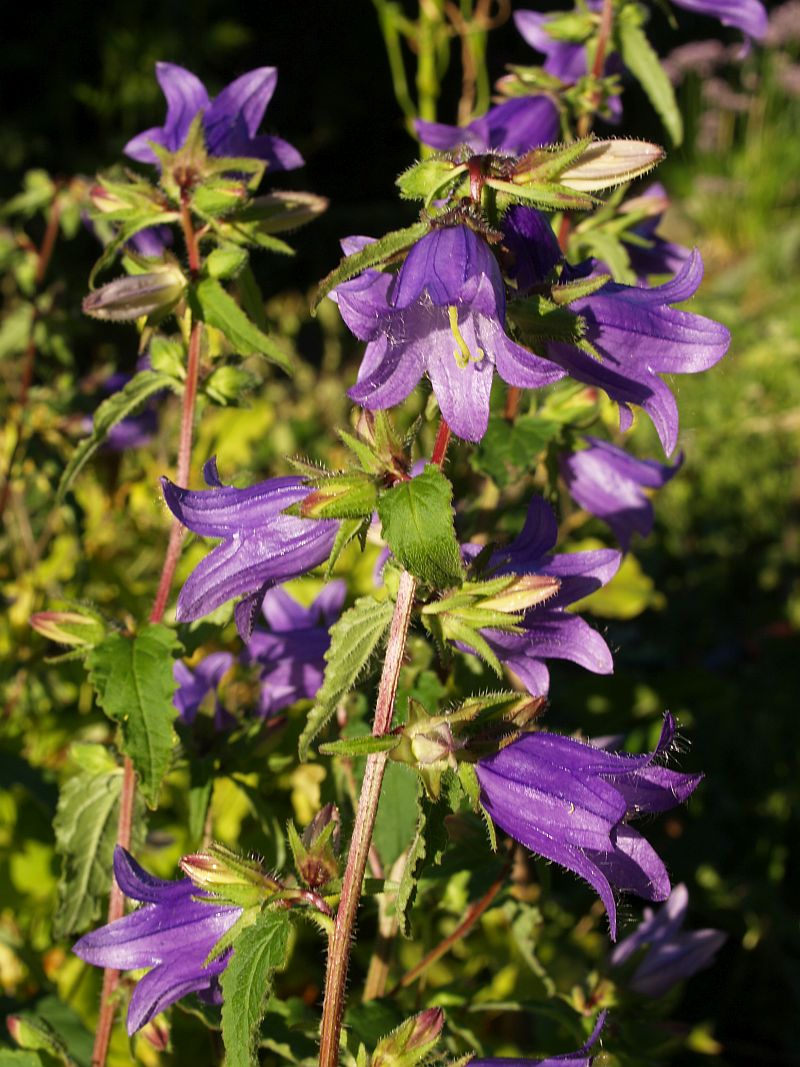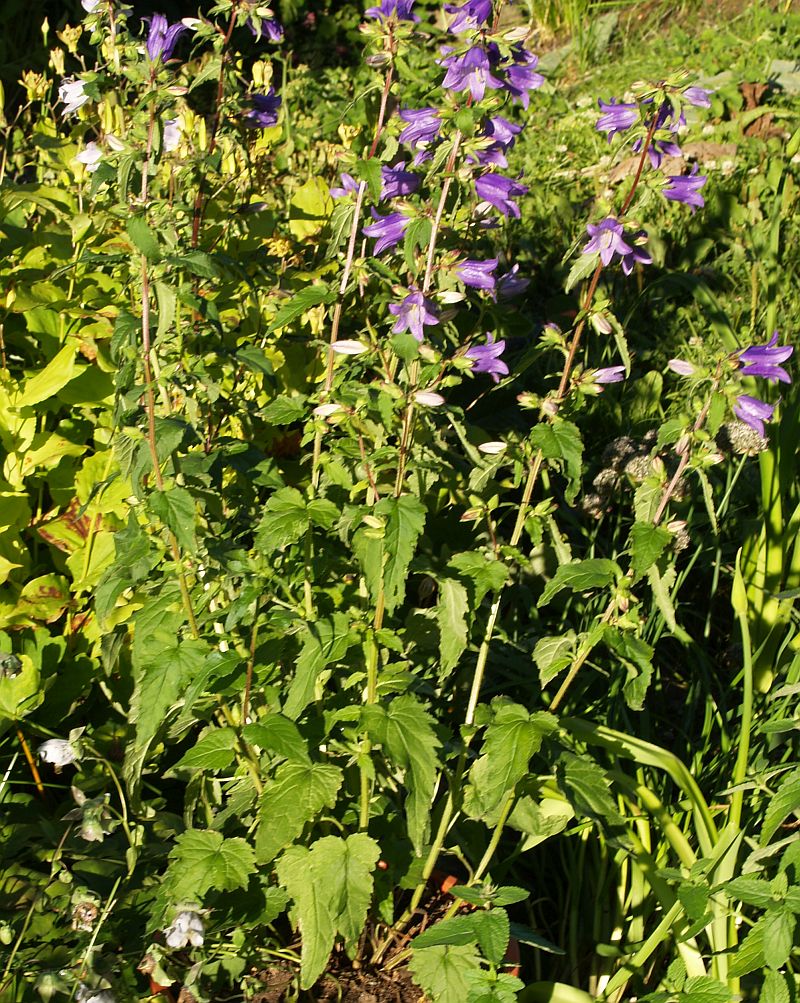Nettle-leaved bellflower (Campanula trachelium) has a more southwesterly distribution in Europe than my favourite giant bellflower C. latifolia and replaces the latter species in the south of England, France, Italy, Spain and North Africa and eastwards into West Asia. It has also widely naturalised in northeast North America. Like C. latifolia, it has edible sweetish tasting roots that contain the carbohydrate inulin like Jerusalem artichoke, good for diabetics, but can give flatulence. I suspect, however, that it takes several years to get to a usable size. I’ve been digging over an area of the garden into which Polygonum alpinum (Alpine knotweed) had invaded this week and there were also many self-seeded bellflowers with good sized roots, so I put them to one side to use in a delicious zucchini-bellflower curry which we ate last night!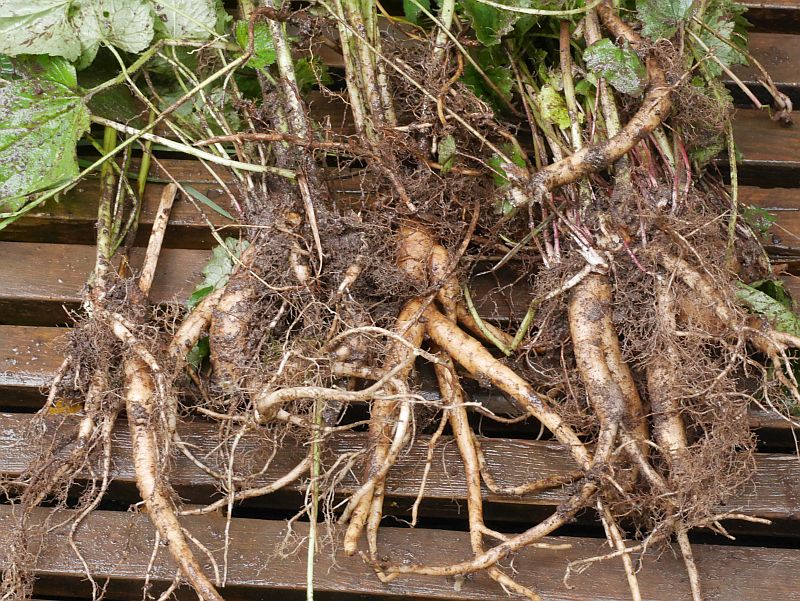
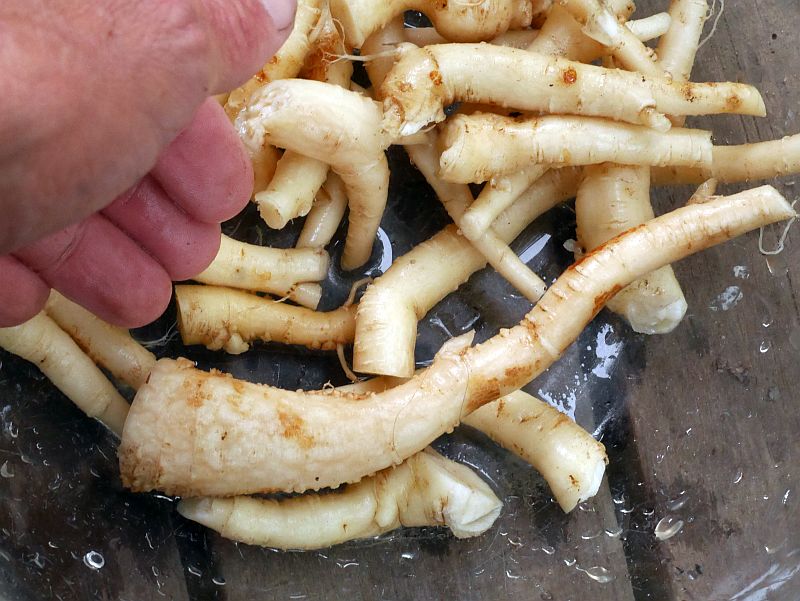
Nettle-leaved bellflower has similar habitat requirements to the giant bellflower, inhabiting open woodlands and hedgerows and grows well in complete shade on the north side of my house amongst the Hostas. It has a preference for alkaline soils and grows well on clay. It is therefore an excellent plant for the forest garden, although given the choice I would prefer the giant bellflower as the spring leaves of trachelium are coarser and hairier and therefore less good in salads, but nevertheless fine finely chopped in mixed salads. It has been used traditionally in Italy in mixed species spring soups such as minestrella (see page 59) and is one of the ingredients in pistic (boiled and fried, see page 59 of my book Around the World in 80 plants).
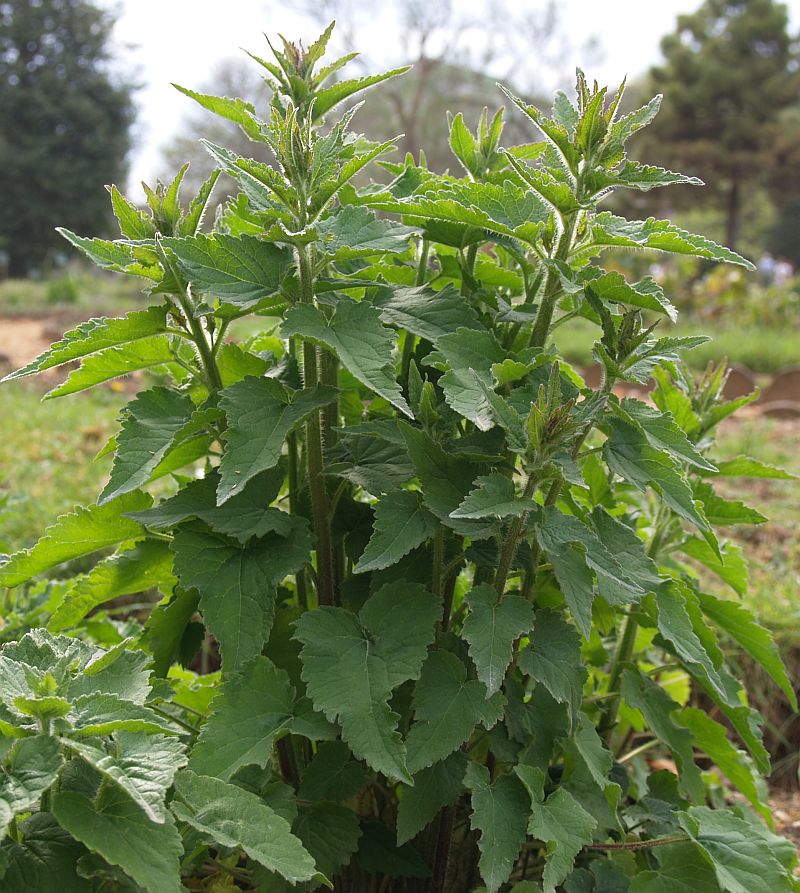
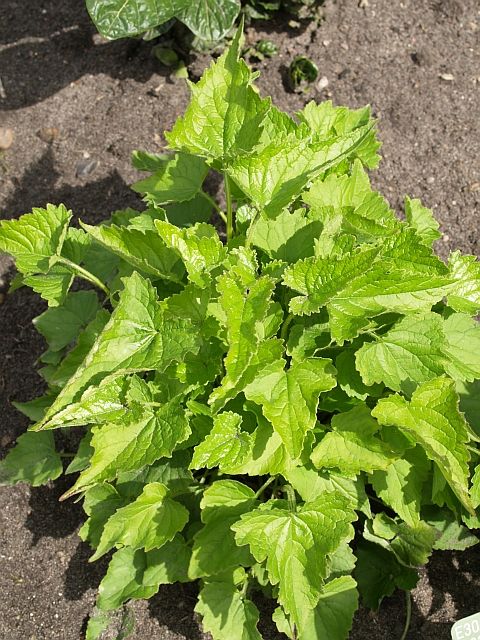
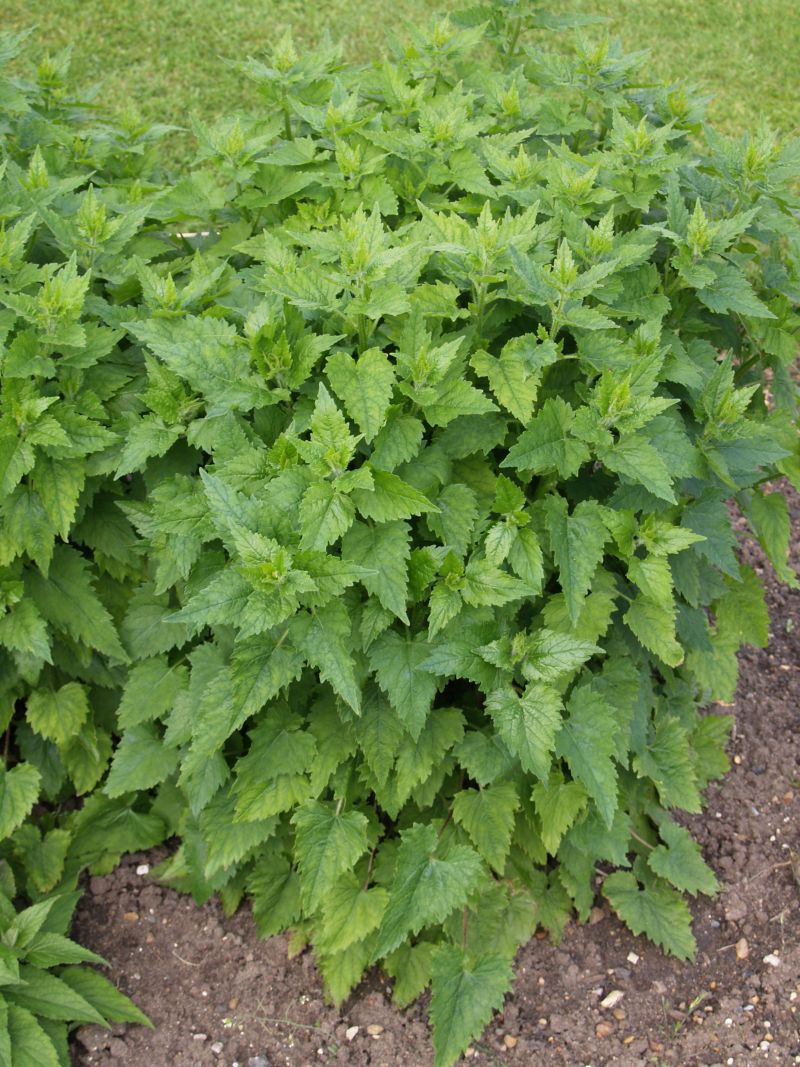
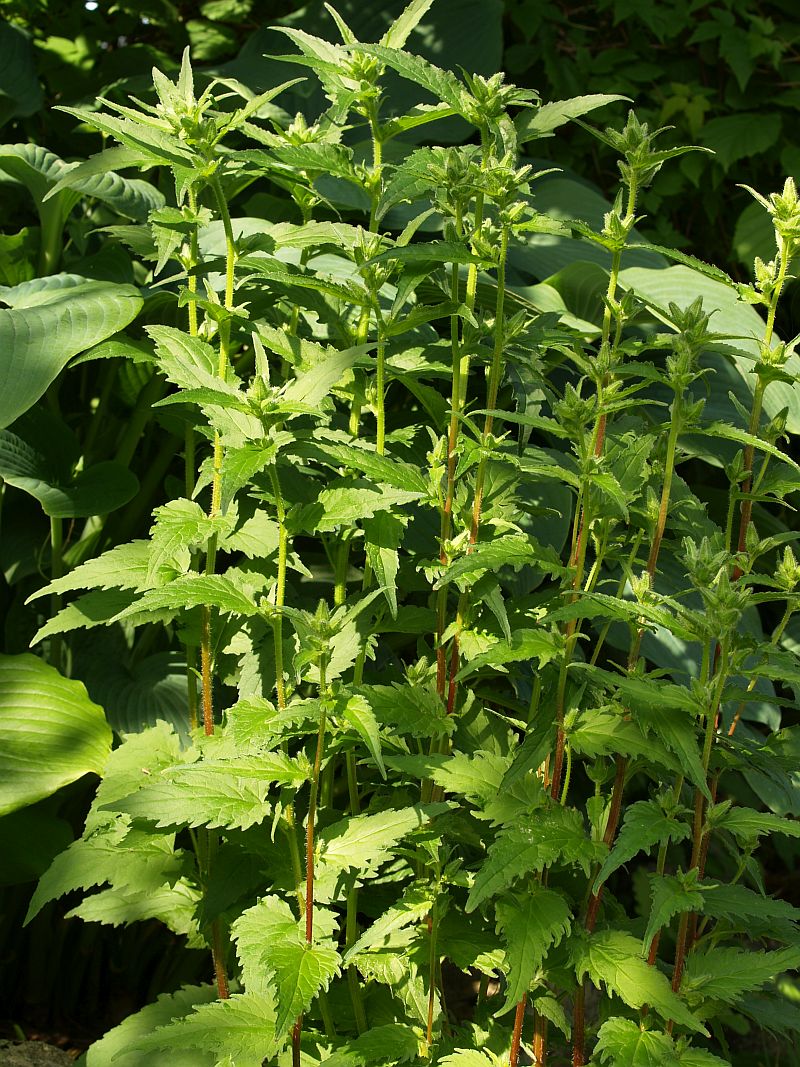
There are a number of ornamental forms available in the trade which you might like to try, including a single-flowered white form (var. alba), which has naturalized in my garden. The double white (‘Alba Flore Pleno’) form and “Snowball” (https://dorsetperennials.co.uk/product/campanula-trachelium-snowball) haven’t come true from seed for me. ‘Bernice’ is another deep purple-blue flowered cultivar.
